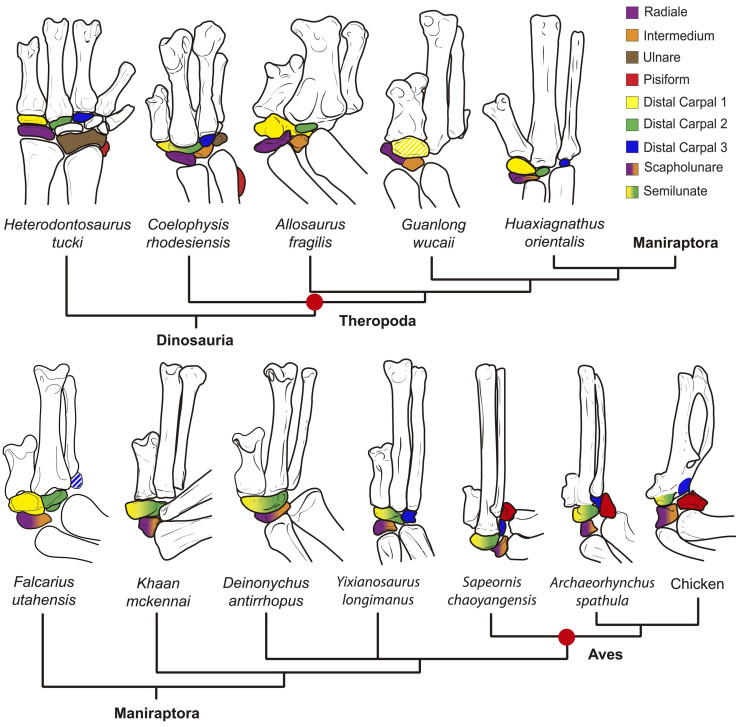Evolution Of Modern Birds: How Dinosaurs Got Their Wings

The link between dinosaurs and birds is widely accepted, but exactly how the prehistoric animals evolved flight is still being settled. The answer, however, may lie in the wrists, according to a new study published Tuesday in the journal PLOS Biology.
A reduction in the number of wrist bones over millions of years may explain how straight dinosaur wrists became hyperflexible bird wings, researchers in Chile have found. “Some bones fused, other bones disappeared, and one bone disappeared and then reappeared in evolution,” Alexander Vargas, a biologist at the University of Chile in Santiago, told Discovery News. Vargas showed how some dinosaurs went from having nine wrist bones to four wrist bones, the number of wrist bones in modern birds.

Researchers examined several dinosaur fossils using a new technique that allowed them to study specific proteins inside embryonic skeletons. They found that one bone in particular, a small bone in a bird’s wing called the pisiform, was present in flying dinosaurs, but disappeared as they morphed into the birdlike terrestrial dinosaurs that became the ancestors of modern birds.
Traditionally, the primary source of evidence for dinosaur-to-bird evolution came from the similar shape of bird bones. "Dinosaurs forming to birds is not an intuitive concept to most people,” Vargas said. "And this is why it has taken a long time to achieve the current state in science in which this is a well-accepted fact."

In August, researchers found that a group of large terrestrial, carnivorous dinosaurs known as theropods steadily shrank for more than 50 million years to become today’s birds of flight. Theropods developed the necessary characteristics to become birds, like wings and flight feathers, faster than most other dinosaurs, according to the study from researchers at the University of Adelaide in Australia.
© Copyright IBTimes 2025. All rights reserved.






















